A Christmas Carol by Dickens Essay
A Christmas Carol by Dickens was first published on December 19, 1843. Since its publication, this book, arguably one of his most famous works, has made its mark on American culture and literature. It is difficult to underestimate the significance of A Christmas Carol , which was made into numerous TV and stage versions. Some would even argue that this Dickens’s work invented or rather reinvented Christmas, while others underline the importance of his work for the development of the new forms of literature. This essay aims to discuss the theme and the characters of the book. It starts with a summary of the plot, then examines the main characters and the themes and concludes with the personal opinion on the novella.
Dickens offers a story of Ebenezer Scrooge, a greedy and selfish older man living alone in his London house, whose only concern is money. Scrooge hates Christmas and is indifferent to other people’s suffering, including his workers. However, on Christmas Eve, he is visited by the ghost of his business partner and by the Ghosts of Christmas Past, Christmas Present and Christmas Future. The first ghost takes him on a journey through his past Christmases: one of a miserable and lonely little boy and others of a young man, more interested in gold than in his fiancé. The Ghost of Christmas Present shows Scrooge his clerk’s family Christmas, a Christmas evening of a poor, but loving family, and his nephew’s celebrations, where guests mock him for his unfriendliness and greediness. Finally, the Ghost of Christmas Future shows him his own death, which would bring more joy to people who knew him than grief. The terror of this night magically transforms Ebenezer Scrooge into a generous and good-hearted man, kind to his neighbors and eager to help those in need.
The main hero of the book, Ebenezer Scrooge, is characterized mainly by his greediness and by the fear that he creates among people who know him. Charles Dickens describes (1843, 4) him as such: “No beggars implored him to bestow a trifle, no children asked him what it was o’clock, no man […] inquired the way to such and such a place, of Scrooge”. Even his clerk is terrified of him and barely dares to speak in his presence.
According to Thompson (2017, 269), the descriptions of Scrooge’s personality allude to the Old Testament figure of King Belshazzar, the ruler who loves wealth and who is punished by God for his greed and pride. However, unlike Belshazzar, Scrooge takes advantage of the warning delivered by the Christmas ghosts and changes, fearing the dreadful end that is awaiting him. He accepts to change and declares: “I will not shut out the lessons that they [the Spirits of the Past, the Present and the Future] teach” (Dickens 1843, 57). Thus, he is a sinner, but the night that he goes through makes hem find the strength to change. This magical and radical overnight transformation becomes central to the figure of Ebenezer Scrooge.
Other central figures are the Ghosts of Christmas Past, Christmas Present and Christmas Yet to Come. The Ghost of Christmas Past is the first ghost to visit Scrooge; he is quite and rather compassionate towards Scrooge, to whom he shows the pictures of his childhood. The Ghost of Christmas Present is a joyful and vibrant character, wearing a green robe and symbolizing joy and happiness. The third Ghost is the most fearsome one; he wears a black cloak and remains silent during their journey. Although the ghosts have distinct personalities, their common characteristic is their role as the messengers. Their figures also reflect Dickens’ interest in “the narrative possibilities of the communication between the living and the dead” (Wood 2018, 412). Dickens’s interest in the supernatural urges him to experiment with the forms of expression and create the figures of these Spirits to deliver the message to Scrooge.
Another prominent figure is Tiny Tim, who is the most significant figure of childhood in the book. He is a son of Bob Cratchit, Scrooge’s clerk. He has a disability, but is full of cheer and love and brings a lot of joy to his family. His words – “God bless us every one!” – mark the end of the novella (Dickens 1843, 92). The figure of Tiny Tim reflects the conception of childhood as the stage of innocence, although it is not the only way children are represented in the novella (Robinson 2016, 8). For instance, the readers observe frightening figures of children clinging to the clothes of the Ghost of Christmas Present. Contrary to this image of “figures which are a product of a fallen world (Robinson 2016, 2), Tim is a constant reminder to everyone of the courage in the face of difficulties.
The characters of A Christmas Carol serve to express Dickens’s Christian humanistic views and attitudes. According to Newey (2016, 12), A Christmas Carol is one of the most important works of Charles Dickens in a sense that it “brings into focus many of Dickens’s core concerns and attitudes of mind.” Dickens demonstrates the transformation of a greedy lender with no sympathy to others, which symbolizes capitalist and rationalist values, into the embodiment of Christianity and humanism.
The contrast between Dickens’s characters furthers strengthens the differences between two ideologies, the humanistic and the capitalist one. The family of Bob Cratchit, Scrooge’s clerk, is a model of a loving family, poor in money but rich in heart, while Scrooge himself reflects utilitarian, purely rationalist values. The values of family loyalty, humanism, kindness, are confronted with the rationalism and greediness of the protagonist.
Another theme of the novella is the relationship between the supernatural and the living. As stated above, Dickens’s works have significantly contributed to the development of the Victorian ghost story. His fascination with the supernatural makes him create the powerful figures of the Ghost of Christmas Past, Christmas Present and Christmas Future, who communicate with the protagonist and act as the messengers of the divine. This communication between the living and the supernatural is central to the plot. This theme reoccurs in Dickens’s works, for instance, in “The Signalman,” although in total, it is present in about 18 Dickens’s stories. The critical result of the supernatural intervention is that it leads to change and transforms the protagonist.
Although often presented as a children’s story, Dickens’s novella A Christmas Carol tells a reader a lot about Dickens’s attitudes and views about the world. This novella promotes the humanistic ideology based on Christian values: love, empathy, and generosity. Moreover, the author experiments with literary forms and contributes to the development of the ghost story. The supernatural plays a central role in the transformation of the main hero. However, the idea that the protagonist needs supernatural intervention in order to change might be problematic for the humanistic perspective that is centered on the agency of human beings. The humanistic perspective stresses the inherently good qualities of human nature, which is contradictory to the idea that supernatural intervention is necessary in order to bring change.
Newey, Vincent. 2016. The Scriptures of Charles Dickens: Novels of Ideology, Novels of the Self. New York: Routledge.
Robinson, David E. 2016. “Redemption and the Imagination of Childhood: Dickens’s Representation of Children in A Christmas Carol.” Literator 37 (1): 1-8. Web.
Thompson, Terry W. 2017. “The Belshazzar Allusion in Charles Dickens’s A Christmas Carol.” The Explicator 75 (4): 268-270. Web.
Wood, Claire. 2018. “Playful Spirits: Charles Dickens and the Ghost Story.” In The Routledge Handbook to the Ghost Story, edited by Scott Brewster and Luke Thurston, 87-96. New York: Routledge.
- Chicago (A-D)
- Chicago (N-B)
IvyPanda. (2023, December 13). A Christmas Carol by Dickens. https://ivypanda.com/essays/a-christmas-carol-by-dickens/
"A Christmas Carol by Dickens." IvyPanda , 13 Dec. 2023, ivypanda.com/essays/a-christmas-carol-by-dickens/.
IvyPanda . (2023) 'A Christmas Carol by Dickens'. 13 December.
IvyPanda . 2023. "A Christmas Carol by Dickens." December 13, 2023. https://ivypanda.com/essays/a-christmas-carol-by-dickens/.
1. IvyPanda . "A Christmas Carol by Dickens." December 13, 2023. https://ivypanda.com/essays/a-christmas-carol-by-dickens/.
Bibliography
IvyPanda . "A Christmas Carol by Dickens." December 13, 2023. https://ivypanda.com/essays/a-christmas-carol-by-dickens/.
- A Christmas Carol of Dickens: Never Too Late for a Change of Heart
- "Christmas Carol" by Charles Dickens Literary Analysis
- Financial Accounting by Dr. Ebenezer
- Employment Issues at the Ebenezer Tea Rooms
- Charles Dickens's Childhood Experiences
- Chapter 33 of "The Old Curiosity Shop" by Dickens
- Lireture Analysis: Charles Dickens
- "A Visit to Newgate" by Charles Dickens
- “Sketched by Boz” the Book by Charles Dickens
- Pip and Joe in “Great Expectations” by Dickens
- The Coming of Age in Mississippi: Memoir by Anne Moody
- The Bluest Eye by Morrison: Characters, Themes, Personal Opinion
- Much Ado About Nothing by Shakespeare
- Invisible Man by Ralph Ellison
- Into the Wild: Characters, Themes, Personal Opinion


A Christmas Carol
Charles dickens, everything you need for every book you read..
Welcome to the LitCharts study guide on Charles Dickens's A Christmas Carol . Created by the original team behind SparkNotes, LitCharts are the world's best literature guides.
A Christmas Carol: Introduction
A christmas carol: plot summary, a christmas carol: detailed summary & analysis, a christmas carol: themes, a christmas carol: quotes, a christmas carol: characters, a christmas carol: symbols, a christmas carol: literary devices, a christmas carol: quizzes, a christmas carol: theme wheel, brief biography of charles dickens.
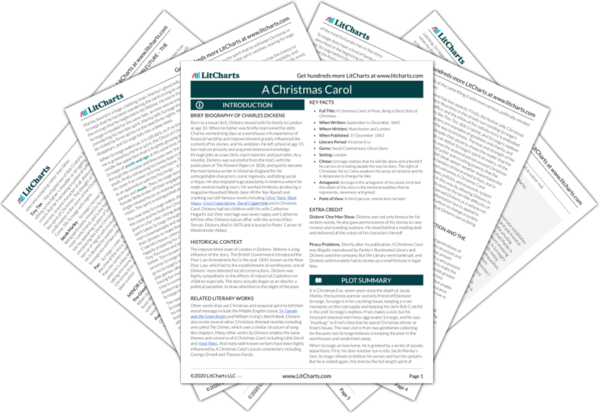
Historical Context of A Christmas Carol
Other books related to a christmas carol.
- Full Title: A Christmas Carol. In Prose. Being a Ghost Story of Christmas.
- When Written: September to December, 1843
- Where Written: Manchester and London
- When Published: 19 December 1843
- Literary Period: Victorian Era
- Genre: Social Commentary, Ghost Story
- Setting: London
- Climax: Scrooge realizes that he will die alone and unloved if he carries on treating people the way he does. The sight of Christmas Yet to Come awakens his sense of remorse and he is desperate to change his fate.
- Antagonist: Scrooge is the antagonist of his social circle but the villain of the story is the immoral qualities that he represents, meanness and greed.
- Point of View: A third-person, omniscient narrator
Extra Credit for A Christmas Carol
Dickens’ One Man Show. Dickens was not only famous for his written words, he also gave performances of his stories to rave reviews and standing ovations. He stood behind a reading desk and delivered all the voices of his characters himself.
Piracy Problems. Shortly after its publication, A Christmas Carol was illegally reproduced by Parley’s Illuminated Library and Dickens sued the company. But the Library went bankrupt, and Dickens unfortunately had to stump up a small fortune in legal fees.

A Christmas Carol
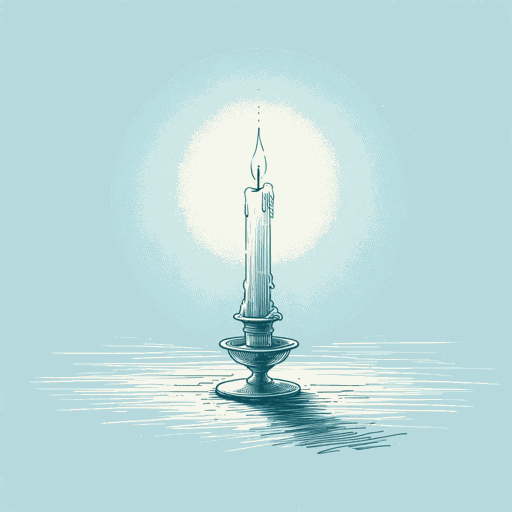
88 pages • 2 hours read
A modern alternative to SparkNotes and CliffsNotes, SuperSummary offers high-quality Study Guides with detailed chapter summaries and analysis of major themes, characters, and more. For select classroom titles, we also provide Teaching Guides with discussion and quiz questions to prompt student engagement.
Chapter Summaries & Analyses
Character Analysis
Symbols & Motifs
Literary Devices
Important Quotes
Essay Topics
Further Reading & Resources
Discussion Questions
How are Victorian theories of poverty similar to or different from modern theories?
Why did the Ghost of Christmas Present tell Scrooge that Ignorance was the more dreadful of the two children of humankind?
Does modern Western society suffer the same economic stratification as Victorian England? What social and economic factors might account for similarities or differences?

Don't Miss Out!
Access Study Guide Now
Ready to dive in?
Get unlimited access to SuperSummary for only $ 0.70 /week
Related Titles
By Charles Dickens

A Tale of Two Cities
Charles Dickens
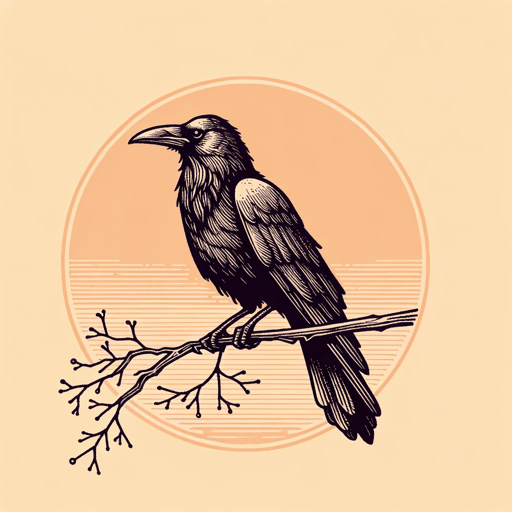
Barnaby Rudge: A Tale of the Riots of Eighty
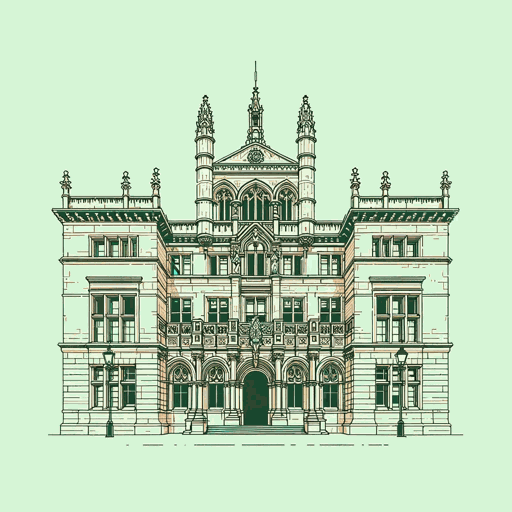
Bleak House

David Copperfield

Dombey and Son

Great Expectations

Little Dorrit

Martin Chuzzlewit

Nicholas Nickleby

Oliver Twist

Our Mutual Friend
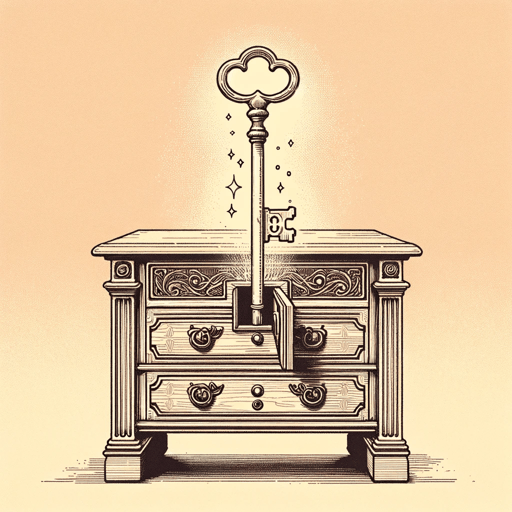
Pickwick Papers

The Mystery of Edwin Drood
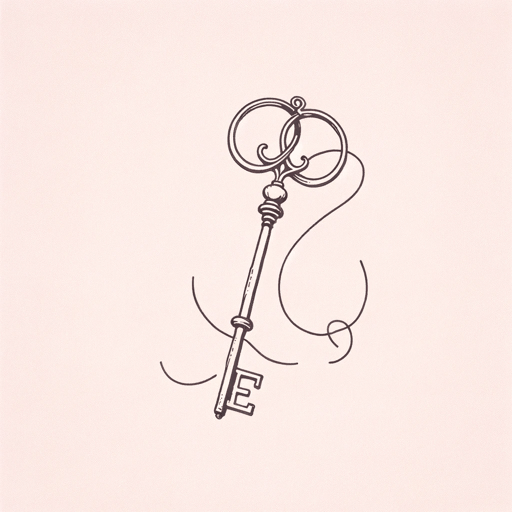
The Old Curiosity Shop
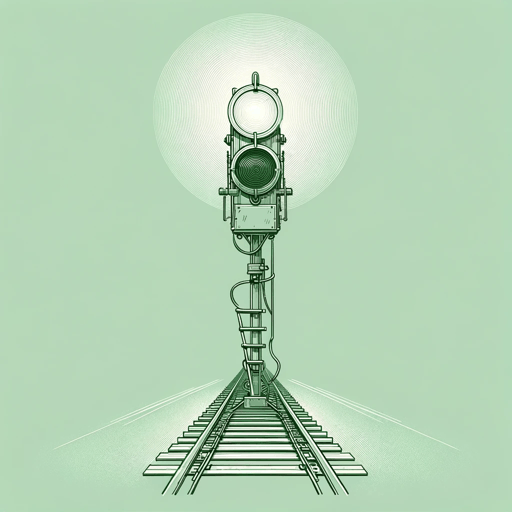
The Signal-Man
Featured Collections
Birth & rebirth.
View Collection
Popular Study Guides
School book list titles, victorian literature, victorian literature / period.
Mr Salles Teaches English
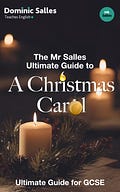
A Christmas Carol: Every Grade 9 Essay in One

There is some context which is relevant to any essay.
And is guaranteed to make parts of any essay worth grade 8 and 9.
As a free subscriber, I am going to give you all of it.
Paid subscribers will get it transformed into a 930 word 30/30 answer. Actually, it is way better than 30/30. If you write only 700 words of this, you’ll still get 30/30.
So, in my commentary, I also share which sentences are essential to getting 100%.
This is an extract from my Ultimate Guide to A Christmas Carol (which also includes 7 grade 9 essays).
I wrote it to help you love the novel, get grade 9 and understand and enjoy literature so that you could choose English literature A level (if you wanted to - some people have to become doctors and chemists, but 100X more will want to read and write for the rest of their lives!)
This topic is going to be 100% relevant to any question you ever get on A Christmas Carol.
How is A Christmas Carol a Criticism of Social Policy in Victorian England?
Dickens shows his opposition to The Poor Laws, which created “workhouses”, by making Scrooge support them: “Are they still in operation?”.
The Victorians Thought the Poor Deserved to Be Poor
Scrooge also supports the criminalisation of the poor, “Are there no prisons?” and believes these are necessary to “decrease the surplus population”, even if this means the poor would “rather die” than attend them. The Ghost of Christmas Present quotes Scrooge’s support back at him ironically when Scrooge is desperate to save Tiny Tim, now that he knows what “the surplus population” looks like.
Thomas Malthus
This language uses the politicians’ interpretation of Thomas Malthus’s economic theory. Because only male property holders could vote, Dickens targets his book at them, pricing it at an expensive five shillings, a third of the “fifteen shillings” a worker like Bob Cratchit earns. Dickens invites the readers into the warmth of the Cratchits’ family Christmas, so that they too can understand the social effects of low wages.
Trading Laws Which Starve the Poor
On the way, Scrooge challenges the ghost for shutting bakers on a Sunday, which was a law upholding the Christian tradition of the Sabbath, forbidding trade, which will “cramp these people’s opportunities of innocent enjoyment...deprive them of their means of dining every seventh day”. Dickens juxtaposes the harshness of society with the “hard and sharp as flint” Scrooge, pointing out that the miser is actually more generous than the reader who votes for such laws.
How the Cratchits Symbolise the Poor Working Class
Inside the Cratchits’ home on Christmas day, we wait for the eldest daughter Martha, a maid of all work, who has still had to “clear away” on Christmas morning for her thoughtless, and entirely normal, employers. The mother and second daughter make their old dresses appear more festive with “ribbons”, Peter wears a ridiculously large present of his father’s old shirt, whose collar is so big it gets “into his mouth”. Only Bob and Tiny Tim have been to church, presumably because the rest of the family lack suitable clothing. Bob himself has no “greatcoat” and his best clothes are “threadbare”. Although this is a comic portrait, it is also a clue that the winter is a threat to health in a poor family.
Next, Dickens italicises the children’s excitement at the feast: “there’s such a goose,” and contrasts this with the goose’s meagre size, so that the family even eat the bones, and there is only an “atom of a bone” left on the table. After witnessing this comic scene, Scrooge brings us back to real life, asking the Ghost “if Tiny Tim will live”. He won’t.
So, Dickens challenges his readers to realise that the going rate of pay creates the working poor, which leads to their malnourishment, poor health, servitude and often death. Scrooge, like the reader, has simply supposed the poor are “idle people'' who choose poverty because of defective character. Dickens wants to disabuse these readers, as he shocks Scrooge into transforming.
Scrooge’s Transformation
It is tempting to see Scrooge’s transformation as needing The Ghost of Christmas Yet to Come, but actually this question in Stave Three is the pivotal moment. Dickens shows us this structurally, as it occurs in the middle of the novel, and also thematically at the end, when Scrooge becomes a “second father” to Tiny Tim.
If this last ghost is not necessary for Scrooge’s transformation, why is he introduced? Dickens uses him to show the reader how wider society is affected by their poor pay. Bob has a comparatively good job for a working-class man. Those who earn less live in slums, where he now takes us: “the whole quarter reeked with crime, with filth, and misery”. Like the reader, Scrooge has avoided seeing the “wretched” conditions in which the poor live, and “never penetrated” there.
Don’t Forget the Workers Who are So Poor That They Become Criminals
Here we meet tradespeople Scrooge has employed, a “laundress” and “charwoman”, and an “undertaker’s man” who has prepared Scrooge’s body. They have all stolen from the dead man’s room. They have “all three met here without meaning it!” because they are embarrassed at their crimes. They are surprisingly polite to each other, and with “gallantry” decide that the poorest, the cleaner, should be last to ask old Joe for a price for her stolen goods, and therefore get a better price. Old Joe himself has made a tiny profit from crime. He is still having to do this, even though “nearly seventy years of age”. His poverty is introduced comically as he invites them into “the parlour... the space behind the screen of rags.” This ironic juxtaposition reveals Dickens' social commentary, where not just poverty, but a significant amount of crime is caused by middle class indifference to the consequence of low wages which they pay.
Mr Salles Teaches English is a reader-supported publication. To receive new posts which help you get top grades, consider becoming a free or paid subscriber.
This Book’s Readers are Employers
This is harder for a modern audience to grasp, but all Dickens’ original readers were exactly this kind of employer. Even Fred, the model of Christmas cheer who puts up with his uncle’s “Bah...Humbug!” has a live-in housekeeper who is still working on Christmas day to welcome Scrooge to Fred’s home!
Dickens expects the reader to identify with the morally good “master” Fred and perhaps now to question their indifference to the lives of their employees.
Revolution and Education
Dickens also warns of greater consequences than crime if society, and the reader, does not change. Because Scrooge begins his transformation, he notices the figures of “Ignorance” and “Want” whom Dickens personifies as a boy and a girl. The Ghost of Christmas Present delivers Dickens’ warning, “but most of all beware this boy, for on his brow I see that written which is Doom, unless the writing be erased.”
“Ignorance” symbolises the lack of education denied to the poor, which results in a spiral of unemployability, or a qualification only for low-wage work. This unspecified “doom” suggests violent crime or political protest, or perhaps predicts the kinds of revolution which swept Europe five years later.
This scene is not necessary to the plot of Scrooge’s redemption, so it works like an aside to the reader, calling our attention to the author’s wider purpose, which is not just to entertain, but persuade the reader to build a fairer society.
The Importance of the Ending
Therefore, Dickens ends the novella with Scrooge raising Bob’s “salary” as his final act.
We remember that his lack of charity was a sign of his miserly behaviour. But Bob’s salary was only the going rate in 1843, not a product of Scrooge’s miserliness. So, this action becomes a clear signal to the reader to increase what they pay their employees and domestic staff.
The final line, ending with “God bless us” is partly ironic. God isn’t going to help the poor, so we, like Scrooge, have to.
Thank you for reading Mr Salles Teaches English. My mission is to help 10,000 students get grade 8 and 9. This post is public so feel free to share it. Help me on my mission.
Rewritten as an Exam Answer
Although Dickens writes the novel as an entertainment, he wants the story of Scrooge’s moral awakening to “haunt” the reader, and so lead to a change in how his readers think about the poor.
A 3 part thesis statement, which sets out Dickens’ ideas, and acts as a plan for your essay. I always write a 3 part thesis statement. Some grade 9 answers get away with 2 - but that leaves your marks to chance.
Dickens shows his opposition to The Poor Laws, which created “workhouses”, by making Scrooge support them: “Are they still in operation?”. Scrooge also supports the criminalisation of the poor, “Are there no prisons?” and believes these are necessary to “decrease the surplus population”. Then Dickens creates Tiny Tim to show us what “the surplus population” looks like, and he uses Tiny Tim’s impending death to transform Scrooge’s view.
Rather than explode a quote to death, use your quotes to build an argument. The argument has to be about the writer’s ideas. This gets your AO2 marks. The more quotes you use, the higher your AO1 mark. Exploding quotes adds very little to AO1, because you use too few ‘references to the text’. Obvious really!
I hope you can see how to turn the context into an essay. Paid subscribers get the rest, with my comments.
Keep reading with a 7-day free trial
Subscribe to Mr Salles Teaches English to keep reading this post and get 7 days of free access to the full post archives.

Miss Huttlestone's GCSE English
Because a whole class of wonderful minds are better than just one!
Model Grade 9 ‘ACC’ essay: Christmas as a Joyful Time
Starting with this extract, explore how far Dickens presents Christmas as a joyful time. (30 marks)
Throughout Dickens’ allegorical novella, his aim is to passionately highlight how such a joyful season can create positive role models for Scrooge. The constant succession of images relating to joy around Christmas may well have been utilised to demonstrate how readers too can learn and improve from the inspirational characters during the novella.
Primarily, within stave 1 of the novella, Dickens utilises the characterisation of Fred as the embodiment of the Christmas spirit with all the positive virtues associated with Christmas. This is evidenced when Fred is described as coming in ‘all in a glow’ with ‘his face ruddy and handsome; his eyes sparkled.’ Here the use of the noun ‘glow’ connotes light and warmth which is strongly linked to hope and purity. This highlights the contrast between Fred and his uncle Scrooge, who was described as ‘hard and sharp as flint.’ Structurally, introducing Fred immediately after Scrooge focuses the reader’s attention on the clear variation between the two and all of the positive qualities that Scrooge lacks. Furthermore, Fred highlights the belief that Christmas is a time for unity within the social hierarchy although it ‘never puts a scrap of gold or silver’ in his pocket and he frowns upon his uncle, completely consumed in the greed for money. Dickens may have done this to foreshadow Scrooge’s transformation into a better man as a result of the inspirational role models around him during the novella. Alternatively, Dickens may have used Fred and Scrooge together to challenge the situation in Victorian Britain during the Industrial Revolution. Scrooge highlights all of the negative traits of upper class men during this time and Fred is a caring and benevolent character, who cares for people lower down on the social hierarchy.
Secondly, within the extract, Dickens utilises the characterisation of Fezziwig to suggest a clear contrast in the two employers. This is evidenced when Fezziwig ‘laughed all over himself, from his shoes to his organ of benevolence.’ The use of the abstract noun ‘benevolence’ suggests the joy and love Fezziwig has for Christmas time. Fezziwig’s kind, caring personality is another role model and catalyst for Scrooge’s transformation. Furthermore, Dickens presents Christmas as a joyful time through Fezziwig’s Christmas party. ‘Fuel was heaped upon the fire’ and the warehouse was transformed into a ‘snug, and warm’ ballroom filled with light. The use of the adjective ‘warm’ connotes kindness and comfort. The detail here in Fezziwig’s scene overwhelms the senses; his generosity is physical, emotional and palpable. As an employer he is the foil of Scrooge and presents all of the positive virtues that Scrooge lacks. Dickens may have done this to highlight a different side to capitalism. Alternatively, presenting Fezziwig as the embodiment of Christmas suggests the importance of Christmas and all of its positive qualities on everyone in society.
Thirdly, within the novella, Dickens utilises the Ghost of Christmas Present to personify Christmas itself. When the ghost appears it has set up an impressive feast of lights and food. This is evidenced when Scrooge’s room is filled with ‘the crisp leaves of holly, mistletoe and ivy reflected back the light, as if so many little mirrors had been scattered there, and such a mighty blaze went roaring up the chimney.’ The scene is hyperbolic and creates a clear contrast with the frugal state of Scrooge’s past Christmases. The use of the light imagery here provides a clear and undeniable tableau of the joyful Christmases Scrooge can afford but chooses to shun. Dickens may have done this to portray Christmas as a bright and familiar celebration which everyone should celebrate in harmony. A modern reader may feel hope that Scrooge will use his wealth to celebrate Christmas with all of the festivities that Christmas should include and celebrate it with the people that care for him, like his nephew Fred.
Finally, in ‘A Christmas Carol’ Dickens reinforces the theme of Christmas spirit through the Cratchit family. Dickens utilises Bob Cratchit to symbolise the true spirit of Christmas and the importance of family. This is evidenced at the Cratchit’s dinner where nobody remarked that it was ‘a small pudding for a large family’. The adjective ‘small’ emphasises the Cratchit’s lack of luxury and yet their enthusiasm in the scene is palpable. This highlights that this ‘small’ pudding was seen as an indulgence to them which is something Scrooge takes for granted. Furthermore, the Cratchit’s ‘four roomed house’ is filled with an overwhelming sense of energy and excitement, which exists as an antithesis of Scrooge’s ‘old…dreary’ abode. This is evidenced as the youngest Cratchit children ‘danced about the table’ this suggests the sense of energy despite their lowly status in society on this festive day. Dickens may have done this to suggest the importance of Christmas to all members of society. Although the Cratchit family are less fortunate than Scrooge or Fred their Christmas is filled with the love they have for each other. A reader may feel delighted to see this family enjoying Christmas day, contented with what they own and hope that Scrooge will see this family as a role model for his transformation.
Share this:
Published by.
gcseenglishwithmisshuttlestone
Secondary English teacher in Herts. View all posts by gcseenglishwithmisshuttlestone
Leave a comment Cancel reply

- Already have a WordPress.com account? Log in now.
- Subscribe Subscribed
- Copy shortlink
- Report this content
- View post in Reader
- Manage subscriptions
- Collapse this bar

Essay Titles
For your revision you should plan an essay based around each of the following questions., remember that you can use quotes - or even entire paragraphs - in multiple questions, so be wise when you prepare. also, b ear in mind that you will have an extract on the day but for revision purposes you're best to plan without one and then incorporate it where you see fit., for each essay, try to plan in the following way:, write your opening paragraph, know what each of your 2 or 3 paragraphs will be about, revise the quotes you’ll use in them, ten key questions:, 1. how does dickens present the character of scrooge in a christmas carol , 2. how does dickens present the cratchits in a christmas carol , 3. how does dickens present the ghosts in a christmas carol , 4. how does dickens explore the theme of redemption in a christmas carol , 5. how does dickens explore the theme of greed in a christmas carol , 6. how does dickens explore the theme of social justice in a christmas carol , 7. how does dickens explore the role of the family in a christmas carol , 8. how does dickens present selfishness in a christmas carol , 9. how important is christmas to the novel a christmas carol , 10. how does dickens criticise society in a christmas carol , an example:, question: how does dickens present the character of scrooge in a christmas carol , opening paragraph:, scrooge is the central character in a christmas carol, and the novel charts his change from being a mean old miser to being a happy member of society . throughout the book he changes for two main reasons: fear of what will happen if he doesn't change , and excitement at the joys he can experience if he does ., paragraphs:, scrooge as a miser: "solitary as an oyster" ... "warning human sympathy to keep its distance" ... refusing to give to the portly gentlemen ... refusing to go to fred's for dinner, scrooge changing through fear: the "neglected grave" ... the selling of his bed covers ... ignorance and want - doom written on the brow of ignorance ... "the poor boy, neglected by his friends", scrooge changing through excitement at society: "scrooge wept to see his former self" ... "the happiness he gives is quite as great as if it had cost a fortune" ... (tiny tim) is as "good as gold and better) ... fred saying that he will carry on inviting him to dinner because he feel "pity" for him, scrooge as a happy member of society:, quite the baby - i'd rather be a baby ... "second father" to tiny tim ... god bless us - every one ... goes to freds, gives to the poor and becomes a hero of christmas, note : you should see that there were loads of different quotes i could have focused on here, and a number of different ways i could have structured my essay. you should choose quotes you feel a real connection to - ones you could write a lot about - and try to reuse quotes (or entire paragraphs) in other essays..

- TOP CATEGORIES
- AS and A Level
- University Degree
- International Baccalaureate
- Uncategorised
- 5 Star Essays
- Study Tools
- Study Guides
- Meet the Team
- English Literature
- Prose Fiction
- Charles Dickens
A Christmas Carol
A Christmas Carol Essay.
Charles Dickens’s A Christmas Carol is a morality tale of a selfish and bitter Ebenezer Scrooge and his visits from 3 spirits representing his past, present and future, bringing him into a complete change of character and reconciliation for his wrongs. It is based in a gloomy social divided 19 th century London. The story is split between 5 staves (chapters). For my essay I will explore the language techniques such as repetition, exaggeration, similes, pathetic fallacy etc that Dickens has used to establish and illustrate his points and views through the story A Christmas Carol.
One technique Dickens successfully merged into the story structure is pathetic fallacy. In the first stave negative points of the weather is used to describe scrooges character, such as “The heaviest rain, and snow, and hail, and sleet, could boast of the advantage over him in only one respect”, Dickens did this to give the reader an insight into scrooge, so they see how much of a cold person he is and how upon meeting him themselves his presence would be like harsh weather. The use of pathetic fallacy could also be linked to scrooge himself, rain, snow, hail and sleet are all weather conditions that are cold themselves and bring a chill through those who experience them, that could also be said for Scrooge. Scrooge himself is a cold person, so he brings about a cold atmosphere around him and spreads his coldness to others through the way he treats them.
In the last stave Dickens use of pathetic fallacy is switched completely from negative to positive. He does this through a dramatic change of how the weather is described, phrases such as “No fog, no mist”. By saying there is no fog or mist in the sky, it is meaning that the harshness of the weather has gone and there is nice weather that remains now, which represents all the unpleasantness and nasty points of scrooges character have vanished, and to show the reader that his character has transformed, and that he is a changed, good person. Dickens wanted to show two completely different types of pathetic fallacy to create a contrast between scrooge in the first and last stave that the reader can obviously see.
Dickens use of adjectives in the first stave describes scrooge’s character very negatively. Phrases such as “his eyes red, his thin lips blue” are used to describe scrooge’s appearance. This brings the reader to think of scrooge as an ugly man. Under typical thinking the reader may link his appearance to his personality and think of him as an all-round nasty and vulgar man. Dickens did this to strengthen the opinion of scrooge for the reader and sets them up for a big contrast between the first and last staves.
Dickens use of adjectives changes dramatically in the last stave. Phrases such as “He looked so irresistibly pleasant” are used to describe scrooge. Scrooges appearance has seemed to also transform somewhat to the first stave, as if along with his personality, now all the evil and nastiness has been taken out his appearance has adjusted to that as well. The reader now sees scrooge in a completely different light, now that his personality and his appearance has changed he is now seen as a completely transformed person.

Dickens use of adverbs/verbs in the first stave describes scrooge’s character very negatively. Words such as “squeezing, wrenching, grasping, scraping” are used to describe scrooge, the words link to how tight he is with his money, and how money hungry he is. The verbs themselves sound quite threatening, and so the reader would feel threatened towards such a person as he. Dickens wanted to create a negative view of scrooge for the reader and so by using verbs that describe his actions in a dramatically negative way and make him sound like a money-mongering all around bad person.
This is a preview of the whole essay
In the last stave Dickens describes and makes scrooges actions sound much brighter and positive in comparison to his actions in the first stave with the use of nicer verbs/adverbs. Verbs such as “fluttered and so glowing” were used to describe scrooge’s actions. The words themselves fluttered and glowing are positive and sound nice, Dickens used words like this to add to scrooges newly found self, and for the reader to see along with a better appearance and transformed personality; his actions are also positive and nice. The term glowing could also be linked with the warmness and the renewing of his character; instead of bringing a dark atmosphere around with him, a certain glow is around him bringing to light to others of his change within himself.
Dickens wanted to put across this idea of rich people being selfish, un-compassionate people. As in Victorian society a blatant social divide of the rich and poor was evident. A sense that people in high society had was that they were more important than those poorer than themselves, and so they’re greed kept their money and anything they had to share was kept to themselves. Dickens’ also shows the appreciation and happiness of the little poor people had and how infact they were richer in life than the rich people were in their wealth. He uses this with the example to Bob Cratchit’s family with such remarks as “Bob had hugged his daughter to his heart's content.” This shows an emotion not seen in the cold-hearted representation of rich people in A Christmas Carol.
Similes are another language technique that dickens has developed and used to create a dramatic sense of scrooges character. A simile used to describe scrooge for example is “Hard and sharp as flint” this gives the impression that scrooge himself is a person with a hard exterior, almost impenetrable for emotion to break through. He is sharp within the sense of his wit, he talks down to those he opposes and with his sharp wit attacks them verbally, such as where he talks to his nephew and says “What reason have you to be merry? You're poor enough” this shows the sharpness in his tongue, and the nastiness in his personality. This sort of use of simile gives the reader something to compare scrooge to, and so see deeper into his personality. Here is another simile from the first stave “solitary as an oyster” an oyster lives on it’s own at the bottom of the ocean isolated, this idea of loneliness could be linked to scrooge. Oysters are also cocooned within a shell; this connects with the thought of scrooge hiding behind a self indulgent front and not letting anyone in emotionally.
Dickens changes his use of simile in the last stave to suit scrooges newly found nice character; this shows a variance between the two opposites in scrooge’s personality in the two staves. For example, here is a simile that describes scrooge in the last stave “I am as happy as an angel” that simile sounds very positive in contrast to ones in the first stave. To say he’s as happy as an angel links into how before he wasn’t happy and his own atmosphere was depressing, but now he is happy and not just happy but as happy as an angelic creature. This shows the reader that scrooge is rejoicing in sight of his own change in character, and how they should feel happy to in response to that.
Repetition is another key technique used to dramatically describe scrooge’s character. A word repeated many times in the first few paragraphs is “dead” with this an instant negative mood is brought upon the reader. With it repeated so many times it keeps the text itself to a low mood, and with the other language techniques combined it makes the reader grasp the pessimistic atmosphere. The word “dead” itself could link to scrooge, as scrooge himself could be seen as dead on the inside, due to his complete lack of emotion shown to anything.
Repetition is used in the same way in the last stave but in a different meaning, not to severely show the bad atmosphere but to highlight and create a positive atmosphere towards the overall affect on the reader. Here is a word repeated often in the last stave “chuckle”. This is a cheerful and enthusiastic word that fits in with scrooge’s new change of character. It makes the reader feel that scrooge is now a humorous person, which he never was before and therefore he has obviously changed.
Scrooges views on Christmas vary between the first and last stave, In the first stave he appears to despise Christmas, and those who think of it as merry, for example he says this to his nephew Bob Cratchit in response to him asking to come round for Christmas dinner “every idiot who goes about with 'Merry Christmas' on his lips, should be boiled with his own pudding, and buried with a stake of holly through his heart” this shows his reluctance against Christmas and makes the reader think that if such a person hates Christmas, a merry and happy time of the year they themselves must be a nasty person. On the other hand they may want to delve deeper into scrooges character, and maybe think why does this man hate Christmas so much? And so wait to find out until they reach an opinion. Dickens idea was to present people of high society as uncompassionate people, and because Christmas is a time to show love and compassion towards others Dickens uses that against scrooges character and makes him hate Christmas, and so that represents the people of high society in that stereotype as cold uncompassionate people, as wanted by Dickens.
In the last stave scrooges view on Christmas appears to have completely changed and reformed into a love of it. For example when he wakes up after all the spirits have visited him he says “A merry Christmas to everybody!” which of course he would have never said before seriously and meant it. This shows the reader that scrooge’s new character has awakened and therefore loves Christmas, and wishes a merry Christmas to all. Dickens created Scrooges love of Christmas to show a comparison between scrooge’s opinions on Christmas, so the reader can see that along with scrooge’s turn of character he is truly a changed man who now loves Christmas.
Dickens uses exaggeration to create a dramatic emphasis of an atmosphere or scrooge’s character, the meaning for it varies between the first and last stave. For the first stave it is used to emphasize the gloomy mood, for example there is a long list of verbs that describe scrooge and his actions, here is a section of that list “grasping, scraping, clutching, covetous” this directly hits the reader with a settled opinion on scrooge, and makes them think of him as an awfully negative person. He may not be all these things, but in the readers eyes he is exaggerated to be a somewhat inhumanly, horrible and tightfisted man. For that is what dickens’ believed people like scrooge and within his high class in society to be in the 19 th century, and so to give the reader a bias view he used exaggeration to exaggerate scrooges actions in a way the reader would be manipulated into believing that that is what rich people were like.
Exaggeration is used in an intensely positively way in the last stave in contrast to the first stave. The phrase “as good a man, as the good old city knew, or any other good old city, town, or borough, in the good old world” is an exaggerated phrase, because of course he isn’t the nicest man in the world, but to the reader he appears to be through pushing this idea to them through exaggeration. Dickens wanted the reader to believe that scrooge had become a new person in complete reconciliation for his past-self, and did so by using exaggeration as a language technique to give an obvious contrast between scrooges transformation.
The change of tone and attitude of scrooges character changes dramatically between the first and last stave, this is shown by the way he acts towards others, and how they perceive his as a person. In the first stave for example it says “No beggars implored him to bestow a trifle” this means that no beggars would bother asking him for anything, as they already know what his response would be, a blatant no. This also links to Dickens’ views on people in high society, he regarded them as selfish and tight people, because during the massive social divide in his lifetime people in rich situations in his opinion were selfish and tight and so to spread his views across he used scrooges character and by showing a beggars negative reaction to scrooge. That shows the divide between the two people, high and low class and a disrespect and tightness from high to low. This makes the reader think that scrooge is a selfish, mean man. Dickens uses scrooges attitude towards others so let the readers form an opinion of how they would react to scrooges character themselves.
Scrooges tone and attitude in the last stave reflects his change of character deeply. Because he is of course a changed man his attitude towards others changed also with that. For example as he is asking a young boy to buy him a turkey he says “Come back with him in less than five minutes and I'll give you half-a-crown." This shows his newly found generosity, as before he would have never given anything willingly to anyone. This helps towards the reader adjusting their opinion of scrooge, and believes that if he is kind to others he must be a kind and changed person himself.
The Young Vic performance showed a modern twist of A Christmas carol . Scrooge was played by a woman in a South African setting, I believe having a woman play scrooge is to show that now that there is a near equality between men and women; women can become in a position like scrooge, have money to themselves and be selfish with it. The story explores Aid’s, prostitution, poverty etc, this highlighted the contrast between old and modern society by exploring these issues from today’s world, this is important because it demonstrates the moral of A Christmas carol in relevance to today.
In conclusion I believe the moral behind Christmas carol is that in a social divided community it is important to treat everyone the same. This is shown through scrooge’s character, and how he treats people somewhat below him in the social hierarchy as a man quite high in society and how he treats them after he has been visited by the spirits. I think that the moral is still of relevance to today’s world, although there is a large time difference between now and then there still are social divides throughout society, weather it be financially or through the new celebrity status’s there are or anything else, so it is still important to withhold the belief that everyone has the right to be treated the same, rich or poor, famous or not famous. Equality is something that should be of relevance though any time, weather it is a problem or something newly found, it is an issue and still will be until there is complete equality for all.

Document Details
- Word Count 2596
- Page Count 5
- Subject English
Related Essays

a christmas carol essay Explore the theme of a change in Christmas carol by...

'A Christmas Carol'.

We are aware of some issues with pdfs on the website after last night's update. Some should now be fixed and others will be later today.

A Christmas Carol

Nathan M. ★ 5.0 (2)
University of york - ma philosophy.
Philosophy Master's Graduate from York with a passion for language, learning, and everything academic!
Notes || Exam Prep || Character Profiles || Themes || Additional Reading & Videos
This topic is included in Paper 1 . You can find notes and guides for it below.
- Glossary of Key Terms
- Key Terms Flashcards
- Guide to Paper 1
- How to plan and write a top mark essay
Additional Reading & Videos:
- Dickens as a social commentator
- The Appeal of A Christmas Carol by Michel Faber
Character Profiles
- Bob Cratchit
- Ebenezer Scrooge
- Marley's Ghost
- Minor Characters
- Materialism and Wealth
- Poverty and Social Injustice
- Redemption and Change
- Religion and Christmas
- The Supernatural
Connect with PMT Education!
- Revision Courses
- Past Papers
- Solution Banks
- University Admissions
- Numerical Reasoning
- Legal Notices
Home — Essay Samples — Literature — A Christmas Carol — Theme of Redemption in “A Christmas Carol”
Theme of Redemption in "A Christmas Carol"
- Categories: A Christmas Carol Charles Dickens
About this sample

Words: 743 |
Published: Sep 7, 2023
Words: 743 | Pages: 2 | 4 min read

Cite this Essay
Let us write you an essay from scratch
- 450+ experts on 30 subjects ready to help
- Custom essay delivered in as few as 3 hours
Get high-quality help

Prof. Kifaru
Verified writer
- Expert in: Literature

+ 120 experts online
By clicking “Check Writers’ Offers”, you agree to our terms of service and privacy policy . We’ll occasionally send you promo and account related email
No need to pay just yet!
Related Essays
3 pages / 1428 words
2 pages / 983 words
2 pages / 887 words
6 pages / 2692 words
Remember! This is just a sample.
You can get your custom paper by one of our expert writers.
121 writers online
Still can’t find what you need?
Browse our vast selection of original essay samples, each expertly formatted and styled
Related Essays on A Christmas Carol
Charles Dickens' "A Christmas Carol" is a timeless tale that revolves around the profound transformation of the main character, Ebenezer Scrooge. As the story unfolds, we witness a radical change in Scrooge's personality, [...]
Charles Dickens’ A Christmas Carol has been a beloved holiday classic for over a century, and the story of Ebenezer Scrooge’s transformation from a miserly old man to a generous and kind-hearted individual is well-known to many. [...]
Charles Dickens' novella, "A Christmas Carol," is a timeless tale of redemption and transformation. At its heart is the character of Ebenezer Scrooge, a miserly and cold-hearted man who undergoes a profound change over the [...]
When it comes to timeless holiday tales, Charles Dickens' "A Christmas Carol" stands as a beloved classic. This novella, written in 1843, has been adapted into numerous films and TV specials over the years. Two of the most [...]
A Christmas Carol was about a man named Ebenezer Scrooge who is a businessman that is greedy, rude, unhappy, and completely focused on making profits. Scrooge has a series of ghosts appear to him that show him his ways and [...]
“These are but the spirit of things that have been.” The metaphorical words of the Ghost of Christmas Past are typical of Dickens’ melodramatic writing style. Set in Victorian England, a time rife with greed and social [...]
Related Topics
By clicking “Send”, you agree to our Terms of service and Privacy statement . We will occasionally send you account related emails.
Where do you want us to send this sample?
By clicking “Continue”, you agree to our terms of service and privacy policy.
Be careful. This essay is not unique
This essay was donated by a student and is likely to have been used and submitted before
Download this Sample
Free samples may contain mistakes and not unique parts
Sorry, we could not paraphrase this essay. Our professional writers can rewrite it and get you a unique paper.
Please check your inbox.
We can write you a custom essay that will follow your exact instructions and meet the deadlines. Let's fix your grades together!
Get Your Personalized Essay in 3 Hours or Less!
We use cookies to personalyze your web-site experience. By continuing we’ll assume you board with our cookie policy .
- Instructions Followed To The Letter
- Deadlines Met At Every Stage
- Unique And Plagiarism Free
Go behind the scenes of a new $1 million production of 'A Christmas Carol' made in OKC

With theatrical fog roiling near his feet and chains dangling from his arms, Vince Leseney sends an amplified scream echoing eerily through the darkened Plaza Theatre.
At his otherworldly shout of "Ebenezer Scrooge!," fellow actor D. Lance Marsh whips around with wide eyes, crying out for mercy as the "dreadful apparition" of his late business partner, Jacob Marley, shambles toward him, dragging the metal money boxes chained to his hands.
"It is required of every man that the spirit within him should walk abroad among his fellow men and travel far and wide. And if that spirit goes not forth in life, it is condemned ..." Leseney spookily recites the famed lines from "A Christmas Carol" as he lumbers closer to Marsh's Scrooge.
"Hold, please. Thank you," interrupts Laurena Sherrill, stage manager for Lyric Theatre's new production of "A Christmas Carol," during a recent Friday night rehearsal.
"So, Vince, when did you walk there?"
As Leseney retraces his steps across Lyric's Plaza District stage, Sherrill and "A Christmas Carol" director Michael Baron count them off, noting each word that coincides with a footfall.
While Sherrill relays those details to sound designer Corey Ray so that he can create the cues for additional chain-rattling sound effects, Baron studies the sprawling Victoria-era recreation of a London city block devised by set designer Adam Koch.
"The entire thing is new, every inch of it," says Baron, Lyric Theatre's producing artistic director. "So, we have a lot of work to do."
What is new with this year's 'A Christmas Carol' at OKC's Lyric Theatre?
After staging Charles Dickens' enduring yuletide tale outdoors at the Harn Homestead for the past three years during the COVID-19 pandemic, Lyric is bringing its 13th annual production of the often-adapted "Ghost Story of Christmas" back indoors.
When this year's "A Christmas Carol" bows Nov. 24 — the day after Thanksgiving — in the Plaza Theatre, ticketholders won't see the same holiday show that Lyric last performed there in 2019 . Last year, Devon Energy pledged a $1 million to help the nonprofit arts organization put on the classic Christmas show inside with a new set, costumes, lights, sound effects and staging.
"It's a terrific role. ... You get to go from being the meanest man on the planet to silly and funny and run the gamut of everything in between," says Marsh, professor of acting and head of performance for Oklahoma City University's School of Theatre , during a break at rehearsal.
"It's incredibly exciting to do it here with all of the stuff — with the flying and with the turntable, the lights and all the sounds and snow. So, it's gonna be magical."
What can people expect from the new million-dollar 'A Christmas Carol?'
"A Christmas Carol" is capping the 60th anniversary season for the state's official theater, with performances continuing through Dec. 24.
Lyric is putting on the beloved Christmas story — 2023 marks 180 years since Dickens published the novella in December 1843 — on a vast new stage dominated by a three-sided turntable, or revolve, that allows the crew to switch scenes so quickly and smoothly that it seems to happen by magic. There's even a bridge built into it that characters can stroll across.
"It's a beautiful set ... and wait 'til you see the costumes, too," Marsh said. "I don't think anybody's seen anything quite like it."
Although he hopes the new production looks like a million bucks, Baron said Lyric didn't need to spend all of Devon's gift to create its new "Christmas Carol," even with hiring four new staffers in the process.
"There's four scene shop houses in America, and the quotes we had for them to build it was a half a million dollars. So, we said, instead of the money going out of town, out of the state, why don't we use it here and also ramp up our production department, which had shrunk because of COVID," Baron said.
"We were down to two production people, which is why we considered bidding it out. Then, once we heard how expensive it was anyway, we said, 'We can do it much cheaper here and also hire people full time.' They'll be with us for years to come. The rest of the money will be for their salaries as well upkeep and new cast members for the next 10 years."
How will Lyric Theatre's new indoor 'A Christmas Carol' borrow elements from the outdoor version?
During the 2020 holiday season, when so many events had to be canceled due to the pandemic, Lyric transported its beloved yuletide show outside to the Harn Homestead, performing an abbreviated 75-minute version of the play with two small rotating casts and limited attendees to allow for social distancing.
Guided by "audience hosts" costumed as Victorian-era lamplighters, audiences would follow the characters to various locales around the Harn Homestead, a living history museum of similar vintage to Dickens' tale, and watch the cast act out the various scenes on makeshift stages. The performers would sing vintage carols as they shepherded ticketholders across the grounds.
In deference to the lingering pandemic, Lyric staged "A Christmas Carol" outside for three seasons, with plans to eventually move back inside the Plaza Theatre.
The familiar favorite will return to Lyric's home venue with a full, larger company, including two rotating casts of child actors. Tiny Tim will be played again by a real boy, rather than the puppet used in the COVID-era production .
Since attendees are no longer spending the show outside and on their feet, the script also has been restored to its usual two-hour runtime, which includes an intermission.
"A lot of the stuff outside I feel we brought inside, meaning there's a lot more stuff (happening) in the aisles," Baron said. "The idea of lanterns and being surrounded by Dickensian people is more evident, and there's a couple more carols."
Lyric Theatre is flying again with its new indoor 'A Christmas Carol'
Perched on a swing high above the Plaza Theatre seats, Karsten Tate, who plays the Ghost of Christmas Past, waves her arms with enchanted intent as she recites Dickens' famed prose.
"As you're being lowered on (the line) 'Your reclamation, then,' you can then gesture," Baron directs the suspended actress.
"And I think for all of them, just point for what you want to happen ... because of the swing chains."
"OK, like this?" Tate asks, pointing with a graceful flourish.
"Yep, there you go," the director confirms. "Then, when you first come out ... give it one little swing to start moving this way."
Since Lyric debuted its "Carol" more than a dozen Christmases ago, the spectacle of the Ghost of Christmas Past flying high across the Plaza Theatre has been a fan-favorite moment.
That sort of staging wasn't possible when the show shifted outside. During the Harn Homestead years, performers portraying the Ghost of Christmas Past would scramble up ladders resting against the trunks of trees to approximate the sense of the phantom floating above the scenes conjured from Scrooge's childhood memories.
With the move back into the Plaza Theatre, getting the first visiting spirit off the ground has been a particular focus for the creative team and cast.
"We're getting there. ... It's very sweet. Christmas Past is a little more like a Mary Poppins as opposed to a Peter Pan. She's a little more sophisticated," Baron explains.
Not to give too much away, but Lyric's new production doubles up on the airborne enchantment compared to the previous indoor production.
That means Baron, his cast and crew spent much of the recent Friday night rehearsal hashing out timing and cues, heights and distances, speeds and safety concerns, all the details involved in sending actors soaring as if by wizardry up to the ceiling and across the theater.
With the first successful run, the performers, stagehands and technicians spontaneously burst into laughter, cheers and applause.
"That is magical," Baron declares with a grin.
LYRIC THEATRE'S 'A CHRISTMAS CAROL'
- When : Nov. 24-Dec. 24.
- Where : Plaza Theatre, 1727 NW 16.
- Information : https://lyrictheatreokc.com .

A Christmas Carol
By charles dickens adapted and directed by lauren keating, december 10 – 29, 2024, venue matthews theatre, american sign language accessibility december 21, 2024 at 1pm. to select the best seats for asl access, please contact patron services at 609-258-2787, tuesday through saturday, 12:00pm - 6:00pm., audio described and open caption accessibility december 22, 2024 at 1pm. to select the best seats for open caption access please contact patron services at 609-258-2787, tuesday through saturday, 12:00pm - 6:00pm., relaxed performance december 28, 2024 at 1pm.
McCarter's annual holiday tradition returns with magic , music , and merriment for all. Follow Ebenezer Scrooge on a fantastical journey through Christmases past, present and future and enjoy this classic story as it comes to life around you. Create magical memories with the ones you love as this festive spectacle ushers you into the spirit of the season with all the delight, wonder, and generosity that Scrooge himself discovers.
- Share full article
Advertisement
Supported by
Guest Essay
Ethan Crumbley’s Parents Were Just Part of a Much Bigger Problem

By Elizabeth Spiers
Ms. Spiers, a contributing Opinion writer, is a journalist and digital media strategist.
James and Jennifer Crumbley never anticipated that their then-15-year-old son, Ethan, would use the 9-millimeter Sig Sauer handgun Mr. Crumbley had bought — ostensibly as an early Christmas present — to kill four students at a Michigan high school. At least that’s the argument their lawyers made in court before Ms. Crumbley, last month, and Mr. Crumbley, almost two weeks ago, were convicted of involuntary manslaughter in separate trials. Prosecutors argued that the Crumbleys did not do enough to secure the gun and ignored warning signs that Ethan was planning to use it.
After every mass shooting by a teenager at a school, there is an instinct to look to the shooter’s parents to understand what went wrong. In the case of the Crumbleys, this seems obvious: Ethan left disturbing journal entries fantasizing about shooting up the school, and stating that he had asked his parents for help with his mental health issues but didn’t get it. His father said the family had a gun safe but the safe’s combination was the default factory setting, 0-0-0.
One factor that’s gotten less attention, however, is how the Crumbleys’ attitudes and actions reflect an increasingly insidious gun culture that treats guns as instruments of defiance and rebellion rather than as a means of last resort.
I’ve been thinking about this case a lot because I grew up in the 1980s and ’90s in a rural part of the Deep South where almost everyone I knew had guns in the house, unsecured, and mental illness was stigmatized and often went untreated. Church was considered a superior venue for counseling, and only “crazy” people sought professional help. If the evidence for criminal negligence is a failure to lock up a gun and ignoring signs of mental illness, many of the adults I grew up around would have been (and still would be) vulnerable to the same charges as the Crumbleys.
It’s convenient and comforting for many people to believe that if it had been their child, they’d have prevented this tragedy. But prison visiting rooms are full of good, diligent parents who never thought their kid would be capable of landing there.
My parents didn’t own a gun safe, but kept guns hidden away from us, which, like many gun owners at the time, they thought of as “secured.” The men in my family were all hunters and the guns they kept were hunting rifles, not AR-15s. (You can’t feed a family with deer meat that’s been blown to bits.) I knew my parents kept a handgun, too, but it was never shown to us, or treated as a shiny new toy.
Gun culture was different then. It would have never occurred to my parents to acquire an entire arsenal of guns and display them prominently around the house, as some people now do, or ludicrously suggest that Jesus Christ would have carried one . They did not, as more than a few Republican politicians have done, send out Christmas photos of their children posing with weapons designed explicitly to kill people at an age when those children likely still believed Santa existed. Open carry was legal, but if you were to walk into the local barbecue joint with a semiautomatic rifle on your back emblazoned with fake military insignia, people would think you were creepy and potentially dangerous, not an exemplar of masculinity and patriotism.
All of these things happen now with regularity, and they’re considered normal by gun owners who believe that any kind of control infringes on their Second Amendment rights. Children are introduced at a young age to guns like the Sig Sauer that Ethan Crumbley used. They’re taught to view guns as emblematic of freedom and the right to self-defense — two concepts that have been expanded to include whatever might justify unlimited accumulation of weapons.
“Freedom” is short for not being told what to do, even though the law very much dictates how and when guns should be used. “Self-defense” is often talked about as a justifiable precaution in the event of home invasion, though home invasions are as rare as four-leaf clovers and do not require an arsenal unless the invader is a small army. (It’s also worth noting that basic home security systems are far less expensive than many popular guns, which suggests that at the very least, some gun owners may be intentionally opting for the most violent potential scenario.) Most important, too many children are taught that guns confer power and can and should be used to intimidate other people. (Relatedly, any time I write about gun control, at least one gun owner emails to say he’d love to shoot me, which is not exactly evidence of responsible gun ownership.)
Mass shooters often begin with a grievance — toward certain populations, individuals they feel wronged by, society at large — and escalate their behavior from fantasizing about violence to planning actual attacks. A study from 2019 suggests that feeling inadequate may make gun owners more inclined toward violence. In the study, gun owners were given a task to perform and then told that they failed it. Later they were asked a number of questions, including whether they would be willing to kill someone who broke into their home, even if the intruder was leaving. “We found that the experience of failure increased participants’ view of guns as a means of empowerment,” wrote one researcher , “and enhanced their readiness to shoot and kill a home intruder.”
The study hypothesized that these gun owners “may be seeking a compensatory means to interact more effectively with their environment.”
Good parents model healthy interactions all the time. If their kids are struggling with a sense of inferiority or are having trouble dealing with failure, we teach them self-confidence and resilience. Parents who treat guns as a mechanism for feeling more significant and powerful are modeling an extremely dangerous way to interact with their environment.
What’s particularly hypocritical here is that the most strident defenders of this culture skew conservative and talk a lot about what isn’t appropriate for children and teenagers. What they think is inappropriate often includes educating kids about sex, about the fact that some people are gay or transsexual and about racism. It’s a perverse state of affairs: Exposing children to simple facts is dangerous, but exposing them to machines designed to kill is not. You can’t get your driver’s license until you’re a teenager, or buy cigarettes and alcohol until you’re 21, but much earlier than that, kids can, with adult supervision, legally learn how to end someone’s life.
Parents can’t ensure that their child won’t ever feel inferior or disempowered, or even in some cases become delusional or filled with rage. Teenagers do things that their parents would never anticipate every day, even if they’re close and communicative. Some develop serious drug habits or become radicalized into extremism or take their own lives.
One thing parents can ensure is that their children cannot get access to a gun in their house. The only foolproof way to do that is to ensure that there’s no gun in the house to begin with. Barring that, parents can make sure they are not reinforcing a toxic gun culture that says that displaying and threatening to use lethal machines is a reasonable way to deal with anger or adversity. That message makes the idea of killing someone seem almost ordinary.
That doesn’t prevent school shooters; it primes them.
Elizabeth Spiers, a contributing Opinion writer, is a journalist and digital media strategist.
Source photographs by CSA-Printstock and John Storey, via Getty Images.
The Times is committed to publishing a diversity of letters to the editor. We’d like to hear what you think about this or any of our articles. Here are some tips . And here’s our email: [email protected] .
Follow the New York Times Opinion section on Facebook , Instagram , TikTok , WhatsApp , X and Threads .

VIDEO
COMMENTS
A Christmas Carol is an allegory in that it features events and characters with a clear, fixed symbolic meaning. In the novella, Scrooge represents all the values that are opposed to the idea of Christmas—greed, selfishness, and a lack of goodwill toward one's fellow man. The Ghost of Christmas Past, with his glowing head symbolizing the mind ...
2 pages / 859 words. Charles Dickens' "A Christmas Carol" is a timeless tale that revolves around the profound transformation of the main character, Ebenezer Scrooge. As the story unfolds, we witness a radical change in Scrooge's personality, values, and outlook on life. This essay delves into the intricate journey...
9 June 1870. Quotes. "There is nothing in the world so irresistibly contagious as laughter and good humor.". "A day wasted on others is not wasted on one's self.". "Please, sir, I want some more.". Interesting facts. His name "Dickens" was a curse, possibly invented by Shakespeare.
Suggested Essay Topics. How is the holiday of Christmas portrayed in the story? (Think of the moral, social, aesthetic, and religious aspects of the holiday.) In what way does A Christmas Carol help to define the modern idea of Christmas? Compare and contrast the three spirits who visit Scrooge.
The Essay. During the opening of the novel, and in the extract, Scrooge is presented as a "tight-fisted hand at the grindstone." ... Charles Dickens wrote A Christmas Carol during the Victorian times, when the gap between rich and poor was very big. In the novel Dickens shows that money is not as important as family when it comes to ...
Full Title: A Christmas Carol. In Prose. Being a Ghost Story of Christmas. When Written: September to December, 1843. Where Written: Manchester and London. When Published: 19 December 1843. Literary Period: Victorian Era.
A Christmas Carol Revision. Below, you'll find everything you need to revise for A Christmas Carol - and if you need anything else, just let us know and we'll do our very best. It's what we ask of you, so it's the least we c ould offer in return...
New York: Dodd, Mead, 1968. A discussion of Dickens' extensive use of children in his novels. A Christmas Carol is considered in detail, in two ways. Scrooge's unhappy childhood is considered ...
Analysis. In A Christmas Carol, an allegory of spiritual values versus material ones, Charles Dickens shows Scrooge having to learn the lesson of the spirit of Christmas, facing the reality of his ...
Thanks for exploring this SuperSummary Study Guide of "A Christmas Carol" by Charles Dickens. A modern alternative to SparkNotes and CliffsNotes, SuperSummary offers high-quality Study Guides with detailed chapter summaries and analysis of major themes, characters, and more. For select classroom titles, we also provide Teaching Guides with discussion and quiz questions to prompt student ...
The focus on how to gain extra marks is so useful for students aiming high in their studies. This clean & simple new guide from Accolade Press will walk you through how to plan and structure essay responses to questions on Charles Dickens's A Christmas Carol. By working through seven mock questions, these detailed essay plans will show you how ...
AO3 context made grade 9 because it is linked to Dickens' purpose and ideas. Put then in your own words and memorise them. They will fit every essay. Here we meet tradespeople Scrooge has employed, a "laundress" and "charwoman", and an "undertaker's man". They have all stolen from the dead man's room.
A Christmas Carol is one of Charles Dickens's best-known and most popular books. A century after it was written, it was still required reading at Christmas for many families. It has been made ...
A Christmas Carol Sparknotes. has been a timeless classic that has captivated readers for generations. Through its timeless themes and memorable characters, the novella has continued to resonate with audiences, inspiring countless adaptations and interpretations. In this essay, we will delve into A Christmas Carol through the lens of Sparknotes ...
Furthermore, Dickens presents Christmas as a joyful time through Fezziwig's Christmas party. 'Fuel was heaped upon the fire' and the warehouse was transformed into a 'snug, and warm' ballroom filled with light. The use of the adjective 'warm' connotes kindness and comfort. The detail here in Fezziwig's scene overwhelms the ...
For your revision you should plan an essay based around each of the following questions. Remember that you can use quotes - or even entire paragraphs - in multiple questions, so be wise when you prepare. ... Scrooge is the central character in A Christmas Carol, and the novel charts his change from being a mean old miser to being a happy member ...
A Christmas Carol. In Prose. Being a Ghost Story of Christmas, commonly known as A Christmas Carol, is a novella by Charles Dickens, first published in London by Chapman & Hall in 1843 and illustrated by John Leech.It recounts the story of Ebenezer Scrooge, an elderly miser who is visited by the ghost of his former business partner Jacob Marley and the spirits of Christmas Past, Present and ...
A Christmas Carol Essay. Charles Dickens's A Christmas Carol is a morality tale of a selfish and bitter Ebenezer Scrooge and his visits from 3 spirits representing his past, present and future, bringing him into a complete change of character and reconciliation for his wrongs. It is based in a gloomy social divided 19 th century London. The story is split between 5 staves (chapters).
Dickens's "A Christmas Carol" short summary. Ebenezer Scrooge, the vengeful and elderly miser, undergoes a tremendous transformation over the course of Christmas Eve night in the Victorian morality story "A Christmas Carol.". Mr. Scrooge, a money-changer and financier, has dedicated his life to accumulating wealth.
Morality. Poverty and Social Injustice. Redemption and Change. Regret. Religion and Christmas. The Supernatural. Advertisement. Summary notes, character profiles, themes, glossary,flashcards, and essay writing guides for AQA English GCSE Section B: A Christmas Carol.
A Christmas Carol by Charles Dickens tells the story of Ebenezer Scrooge, an old man who transforms his miserly ways after four ghostly visits one Christmas Eve. Three ghosts take Scrooge through ...
Published: Sep 7, 2023. Redemption is a central theme in Charles Dickens' beloved novella, "A Christmas Carol." The story follows the transformative journey of the protagonist, Ebenezer Scrooge, from a miserly and heartless individual to a compassionate and benevolent man. This essay delves into the significance of redemption in the narrative ...
For a detailed analysis of each of these quotations, see our A Christmas Carol: Key Quotations page. Top tips for the highest grade. Please see our revision pages on the 19th-century texts for guides on: Structuring A Christmas Carol essay; A Christmas Carol methods and techniques; How to include context in A Christmas Carol essay
Fully titled "A Christmas Carol. In Prose. Being a Ghost Story of Christmas," Dickens' now-iconic tale was initially published on Dec. 19, 1843.
When this year's "A Christmas Carol" bows Nov. 24 — the day after Thanksgiving — in the Plaza Theatre, ticketholders won't see the same holiday show that Lyric last performed there in 2019 ...
A Christmas Carol. By Charles Dickens Adapted and Directed by Lauren Keating. DECEMBER 10 - 29, 2024. Venue Matthews Theatre American Sign Language Accessibility December 21, 2024 at 1PM. To select the best seats for ASL access, please contact Patron Services at 609-258-2787, Tuesday through Saturday, 12:00PM - 6:00PM.
Ms. Spiers, a contributing Opinion writer, is a journalist and digital media strategist. James and Jennifer Crumbley never anticipated that their then-15-year-old son, Ethan, would use the 9 ...